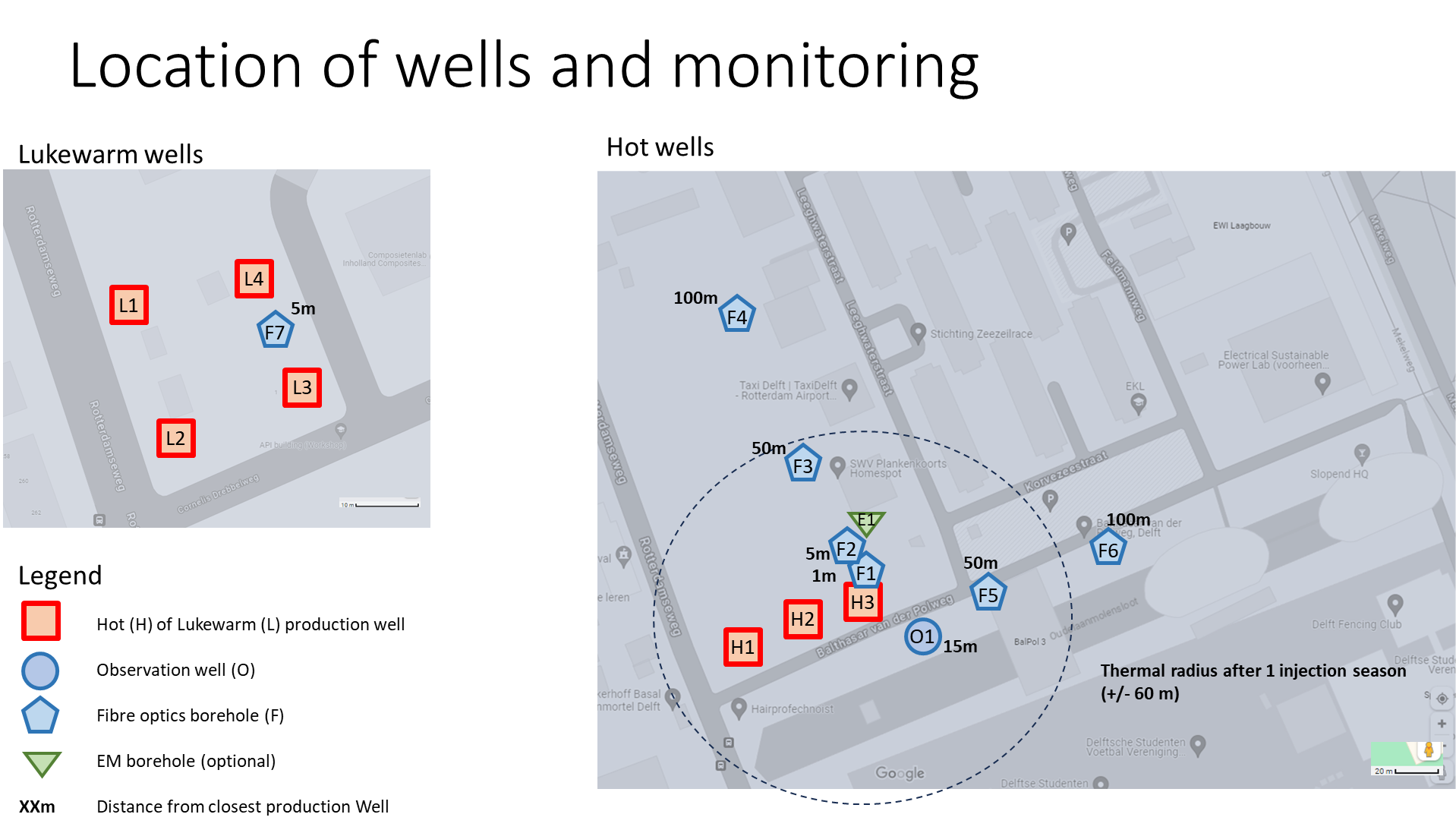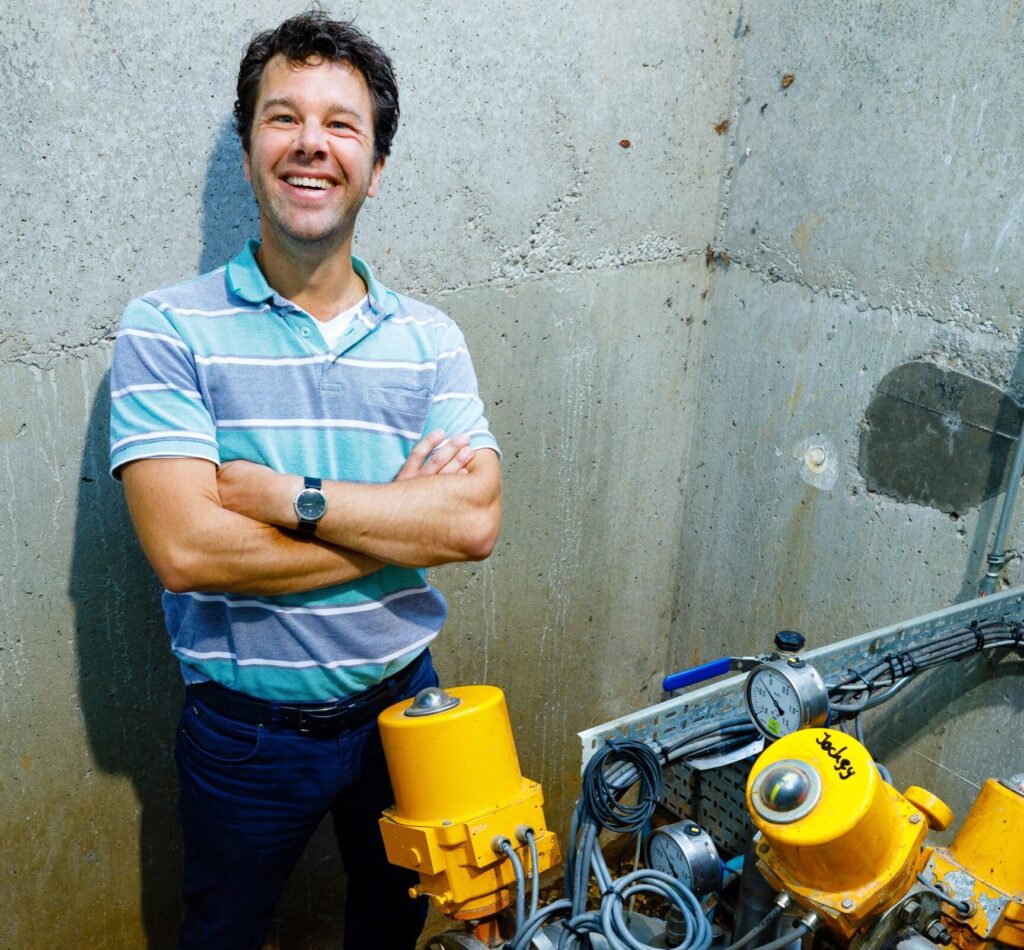Delft (Netherlands)
Demo site for Aquifer Thermal Energy Storage (ATES).
In Delft, the high-temperature ATES will be installed at the campus of Delft University of Technology (TU Delft). It will be integrated in the TU Delft district heating network. This network is currently being fed with heat from gas fired boilers and a combined heat and power unit. But this will soon be replaced by a geothermal well, producing heat at around 75-80°C, together with a heat pump to boost temperature level to 90°C when needed to meet demand. The heat network will also be extended to the city of Delft, which is scheduled to start around 2025. Excess heat produced by the geothermal well in summer, will be stored in the ATES wells, and be utilised to meet peak demand in winter. We aim to do the following:
- Demonstrate and develop the implementation of HT-ATES in an urban setting.
- Develop enabling technologies, like novel drilling and completion methods, water quality control, well testing, and integration and control.
- Extensively monitor temperature distribution in the subsurface to understand behaviour and improve models. Extensively monitor and evaluate energy performance of the ATES and system.
- Societal engagement and legal evaluation for improving the just energy transition.
Project details
- Location: TU Delft campus
- Energy infrastructure
- TU Delft district heating network with current gas fired boiler and combined heat and power unit, which will be replaced by geothermal heat by 2024.
TU Delft heat demand: currently 190-160 TJ/y, to be reduced by insulation measures to around 80 TJ/y by 2040. - Extended district heating network towards Western part of Delft from around 2025 onwards.
Heat demand ramping up to 120 TJ/y by 2030, further increasing to 200-400 TJ/y towards 2040. - Temperatures: supply 75-90°C / return 50-55°C.
- TU Delft district heating network with current gas fired boiler and combined heat and power unit, which will be replaced by geothermal heat by 2024.
- ATES heat source: Geothermal well and heat pump
- Objectives of the demo site:
- Store heat surplus in summer and supply this heat in winter, thereby reducing the need for fossil fuel energy to meet peak heat demand.
- Create flexibility and robustness in the heat supply system.
- Target storage capacity: 25-50 TJ (400,000 – 800,000 m3 storage volume)
- Status:
Integration
The project ATES well locations are close to the heat plant, the geothermal well and the projected location of the heat pump centre. So heat transport, conversion and heat exchange will occur close to the ATES, making the integration easier, but fitting everything in tough. Campus Real Estate of the TU Delft runs the TU Delft district heating network, while the operator Netverder operates the city district heating network. The geothermal well, heat pump centre and ATES will deliver heat to these networks. Those facilities are operated by Geothermie Delft, a collaboration by TU Delft, Aardyn, EBN and Shell.


- Dr. Martin Bloemendal
- Associate professor
- j.m.bloemendal@tudelft.nl
- www.tudelft.nl
Bochum (DE)
Demo site for Mine Thermal Energy Storage (MTES).
Delft (NL)
Demo site for Aquifer Thermal Energy Storage (ATES).
Darmstadt (DE)
Demo site for Borehole Thermal Energy Storage (BTES).
Berlin (DE)
Follower site for Aquifer Thermal Energy Storage (ATES).
United Downs (UK)
Follower site for Mine Thermal Energy Storage (MTES).
Litoměřice (CZ)
Follower site for Borehole Thermal Energy Storage (BTES)

PUSH-IT is a project funded by the European Union’s Horizon Europe research and innovation programme under grant agreement No 101096566.
Funded by the European Union. Views and opinions expressed are however those of the author(s) only and do not necessarily reflect those of the European Union. Neither the European Union nor the granting authority can be held responsible for them.
